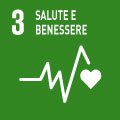- Docente: Paola Maria Carmela Italia
- Crediti formativi: 6
- SSD: L-FIL-LET/13
- Lingua di insegnamento: Inglese
- Modalità didattica: Convenzionale - Lezioni in presenza
- Campus: Bologna
- Corso: Laurea Magistrale in Digital Humanities and Digital Knowledge (cod. 9224)
-
dal 10/02/2025 al 31/03/2025
Conoscenze e abilità da conseguire
The course aims to present DSE Digital Scholarly Editions through a theoretical approach, showing the different typologies, the coding methods used to create them and some exemplary case studies of mono- and multi-text editions of literary texts (poetry and prose, epistolary and correspondence, essays). In the second part of the course, students will participate in the creation (design, marking, edition, visualization, publication) of a DSE, directly experimenting with the contents learned in the first part of the course,in order to deal critically with the problems linked to text criticism in the new digital ecosystem.
Contenuti
1. Theory: What is a digital scholarly edition (DSE);
2. Theory: DSE and Digital Archives;
3. Methods: Modelling
4. Methods: Marking with Xml/TEI
5. Methods: Visualizing
6. Case studies: letters;
7. Case studies: novels;
8. Case studies: poems;
9. Practice: presentation of student’s DSE
10. Practice: presentation of student’s DSE
Testi/Bibliografia
THEORY
Pierazzo 2015, Digital Scholarly Editing.Theories, Models and Methods, Rutledge, 2015 (ONLY Chapters: 3, 4, 5, 6: pp. 65-145).
Baillot Anne and Busch Anne Editing for Man and Machine. Digital Scholarly Editions and their Users (https://journals.openedition.org/variants/1220 ).
Lise Jaillant Arran Rise, 2023, Applying AI to digital archives: trust, collaboration and shared professional ethics, Digital Scholarship in the Humanities, Volume 38, Issue 2, June 2023, Pages 571–585 https://academic.oup.com/dsh/article/38/2/571/6832097
Shillingsburg 2013 Shillingsburg, Peter. “Development principles for virtual archives and editions”, “Variants: The Journal of the European Society for Textual Scholarship”, 2013. http://ecommons.luc.edu/ctsdh_pubs/4/
Van Hulle, Dirk, 2021 Dynamic Facsimiles: Note on the Transcription of Born-Digital Works for Genetic Criticism, Variants (2021) https://journals.openedition.org/variants/1450
Wout Dillen, Elli Bleeker, Laura Esteban-Segura and Stefano Rosignoli 2021, Editors Preface to Textual Scholarship in the Twenty-First Century, “Variants” the Journal of the European Society for Textual Scholarship, 15-16 (2021) https://journals.openedition.org/variants/1239
METHODS
Marjorie Burghart, Creating a Digital Scholarly Edition with the Text Encoding Initiative, DEMM, 2017 https://ec.europa.eu/programmes/erasmus-plus/project-result-content/cfb03c8e-6765-477e-aa4d-e2b162f57068/IO2_Creating%20a%20digital%20edition%20with%20the%20TEI.pdf
TEI P5 APPARATUS [https://www.tei-c.org/release/doc/tei-p5-doc/en/html/TC.html]
Shillingsburg 2013 Shillingsburg, Peter. “Development principles for virtual archives and editions”, “Variants: The Journal of the European Society for Textual Scholarship”, 2013. http://ecommons.luc.edu/ctsdh_pubs/4/
Wout Dillen, Elli Bleeker, Laura Esteban-Segura and Stefano Rosignoli 2021, Editors Preface to Textual Scholarship in the Twenty-First Century, “Variants” the Journal of the European Society for Textual Scholalship, 15-16 (2021) https://journals.openedition.org/variants/1239 ; and Anne Baillot and Anna Busch Editing for Man and Machine. Digital Scholarly Editions and their Users (https://journals.openedition.org/variants/1220 ).
Dirk Van Hulle, 2021 Dynamic Facsimiles: Note on the Transcription of Born-Digital Works for Genetic Criticism, Variants (2021) https://journals.openedition.org/variants/1450
Lise Jaillant Arran Rise, Applying AI to digital archives: trust, collaboration and shared professional ethics, Digital Scholarship in the Humanities, Volume 38, Issue 2, June 2023, Pages 571–585 https://academic.oup.com/dsh/article/38/2/571/6832097
METHODS
Marjorie Burghart, Creating a Digital Scholarly Edition with the Text Encoding Initiative, DEMM, 2017 https://ec.europa.eu/programmes/erasmus-plus/project-result-content/cfb03c8e-6765-477e-aa4d-e2b162f57068/IO2_Creating%20a%20digital%20edition%20with%20the%20TEI.pdf
PRACTICE
TEI P5 APPARATUS [https://www.tei-c.org/release/doc/tei-p5-doc/en/html/TC.html]
Metodi didattici
Face-to-face classes and laboratory/workshop sessions of 10 lessons (30 hours). We will use EOL, Mentimeter Exercises, Php, Oxigen, EVT and audio materials available on VIRTUALE and video lessons taken from the ERC DIXIT Project [https://teach.dariah.eu].
Modalità di verifica e valutazione dell'apprendimento
ASSESSMENT METHODS
The examination consists of two parts: Part 1 (EDITION) 50% and Part 2 (ORAL EXAM) 50%.
PART 1: EDITION (/30). Xml/TEI marking of some pages of a DSE (edition, variants and annotation of sources), transforming the XML/TEI file into HTML, presenting it in a Web application. The edition must be submitted 15 days before the date on which the students want to take the exam.
Assessment:
- Outstanding 30 e 30L
Correct marking, visualization and implementation of the platform very effective.
- Very Satisfactory 27-29
Correct marking, visualization and effective platform implementation.
- Satisfactory 24-26
Fairly correct marking, good visualization and implementation of the platform.
- Fairly Satisfactory 18-23
Marking not always correct, sufficient visualization and implementation of the platform.
- Did not Meet Expectations < 18
Incorrect marking, insufficient visualization and implementation of the platform.
To enter Part 2, students must have delivered and passed Part 1.
PART 2. AN ORAL EXAM (/30) in which students will show that they know the topics covered during the course and have studied the compulsory bibliography.
Assessment:
- Outstanding 30 e 30L
Possessing a perfectly clear understanding of all course topics, having explored the topics in depth and using consistently correct linguistic terminology will be assessed with an Outstanding grade
- Very Satisfactory 27-29
Possessing a clear understanding of all course topics, having explored all the topics and using correct linguistic terminology will be assessed with an Very Satisfactory grade.
- Satisfactory 24-26
Mnemonic knowledge of all the course topics or not completely appropriate terminology will be valued with Fairly Satisfactory grade.
- Fairly Satisfactory 18-23
Mnemonic knowledge of some of the course topics or not appropriate terminology will be valued with Fairly Satisfactory grade.
- Did not Meet Expectations < 18
**************************************************
FINAL GRADE
1. EDITION + 2. ORAL EXAM = added up and rounded up (ex.: 27,5 > 28)
Strumenti a supporto della didattica
TEAMS Digital platform, Stream Video and audio recording of the lessons, Php, Oxigen, EVT and didactic materials available on VIRTUALE and innovative Digital Scholarly Training video lessons taken from the ERC DIXIT Project https://teach.dariah.eu; Mentimeter Exercises; EOL Exam.
Orario di ricevimento
Consulta il sito web di Paola Maria Carmela Italia
SDGs


L'insegnamento contribuisce al perseguimento degli Obiettivi di Sviluppo Sostenibile dell'Agenda 2030 dell'ONU.
